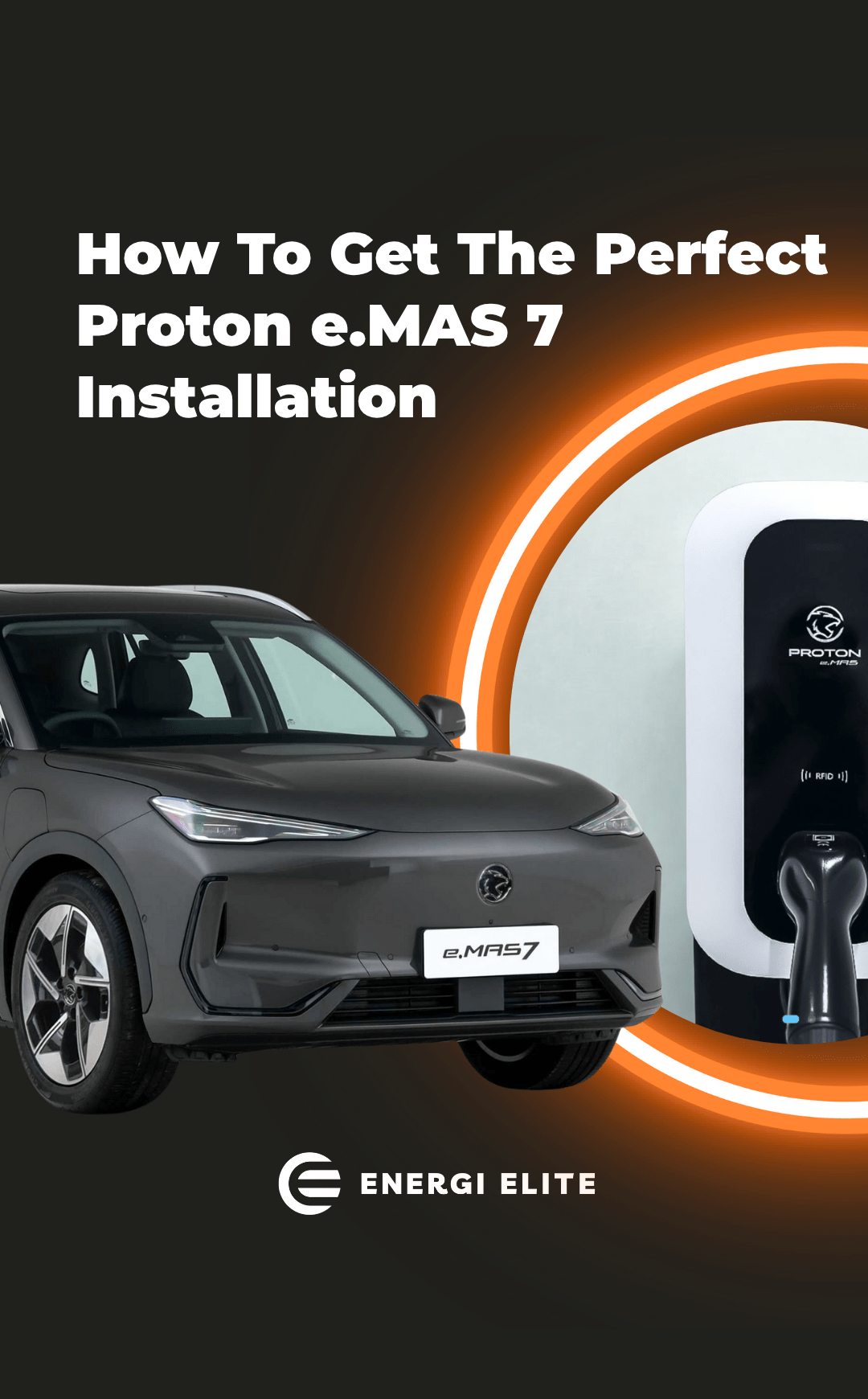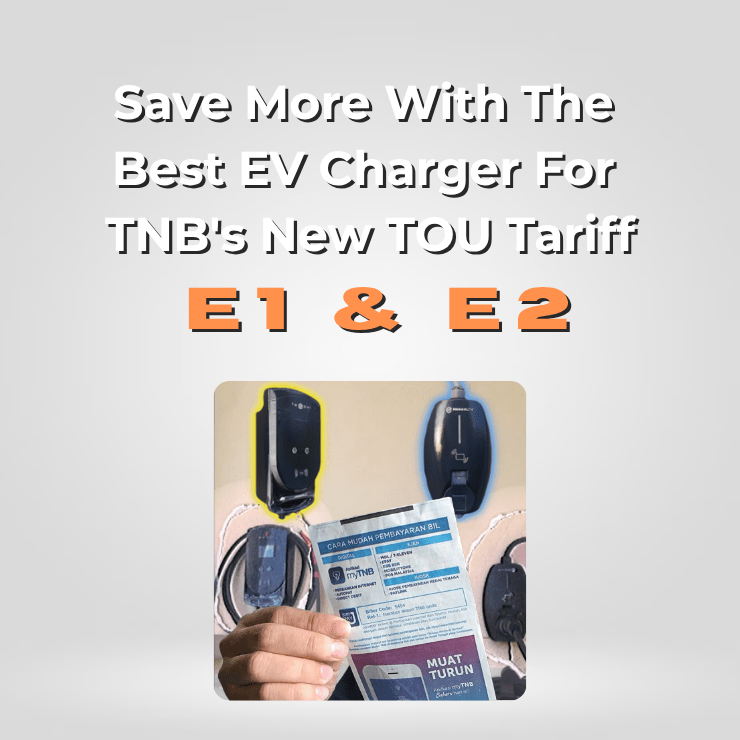Insights On EV Battery Swapping In Malaysia 2024
EVs’ most reliable charging method has always been plug-in AC and DC charging, however over the years of progress and refinement in battery and charging technology, it hasn’t triumphed the knack of speed for conventional fueling by petrol of ICE vehicles. Recently, however, an alternative has emerged in the form of battery swapping in which claims to shorten battery recharging by replacing it outright in under 3-5 minutes.
BATTERY SWAPPING,WHO DID IT FIRST?
In 2008, electric car battery swapping start-up, Better Place had plans, initially to revolutionize the EV industry with its modular electric vehicular design with backings of $850 Million from corporations such as General Electric and Morgan Stanley with the promise of disrupting the oil-automotive industry.
Did Everything Work Out For Better Place?
Early renditions of their vision was seen through collaboration with Renault-Nissan in the making 100,000 of their battery swapping modular vehicle early 2008. Unfortunately the concept didn’t come to fruition as it was due to its early stages of adoption which meant high cost for its battery swapping systems and lower market penetration.
We raised too much money too soon. Raising too much money causes start-ups to achieve an inflated valuation.”
-Quin Garcia, who helped built Better Place’s first electric prototype
The electric vehicle prototype that didn’t fly.
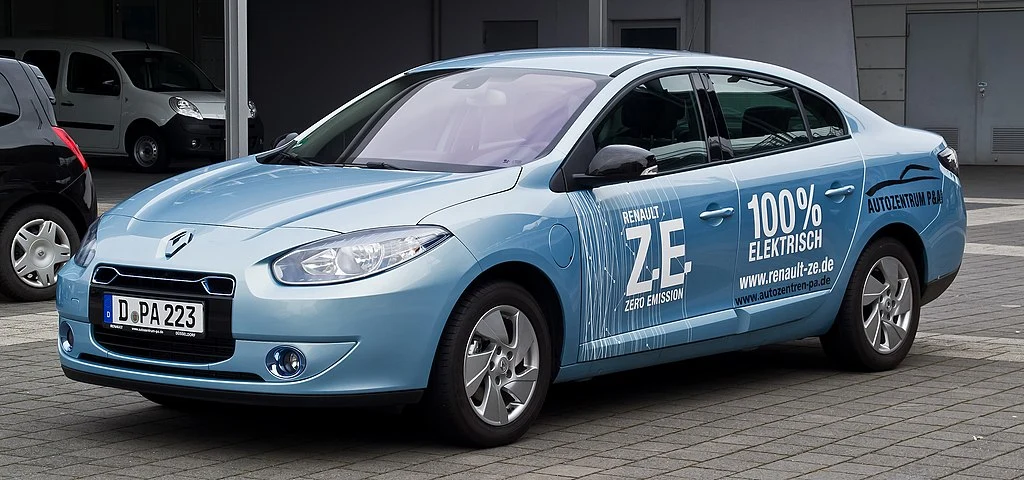
A writer who managed to test drive the prototype electric vehicle from Better Place , the Renault Fluence Z.E, had said that between the drive of roughly 209km, they had to swap the batteries twice despite the advertised range of 185km from its 22kWh battery, a far cry from todays battery capacity and capable range. The writer had positive affirmations of the battery swap station however as the swap took a total of 5 minutes.
The early visionary battery swap stations of Better Place
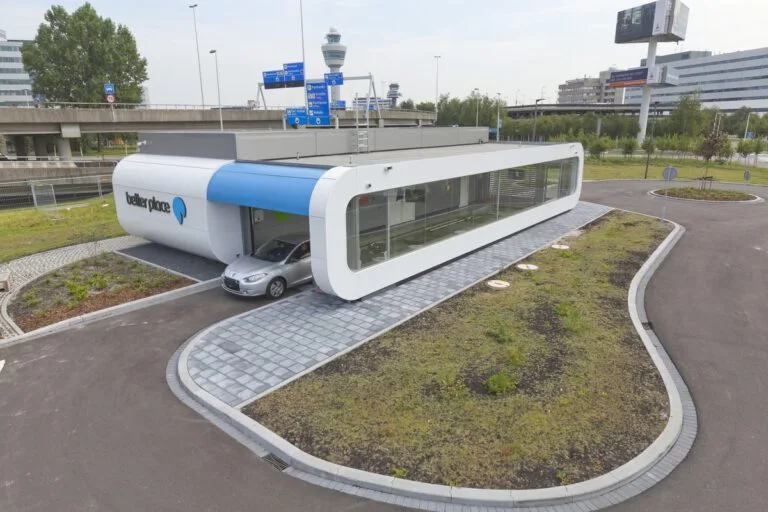
Better Place managed to build its swapping stations across countries like Denmark and Japan which have the same approach as NIO’s battery swap stations currently where the vehicle is raised onto the platform and the battery swapping process starts by unscrewing the modular battery of the EV.
Expansion towards the Country Of The Rising Sun
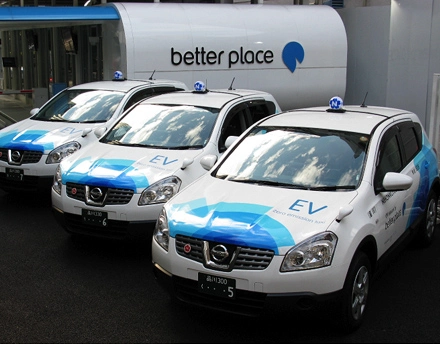
Amidst the hardship, Better Place managed to expand its battery swap vision in the form of trials in Tokyo, Japan. Where converted Nissan Rogues operating in Tokyo operated under the process regular charging via their battery swap station. However it ultimately ended up suspended at the end of the year of its operation in Tokyo. They however noted that statistically :
- A number of 2,122 battery packs changed during its Trials
IS THERE ALREADY A BATTERY-SWAPPING STATION IN MALAYSIA?
The immediate answer is yes. However, it is currently to accommodate only the micro-mobility sector. The micro-mobility in question is an electric motorcycle offered by Blueshark called the R1. Blueshark is the pioneer that brought the initiative of battery swapping stations for its electric motorcycle, R1, in Malaysia. Blueshark, in its essence as a company, delivers smart mobility, swappable, and renewable energy solutions. The R series electric motorcycle is split into 2 variants:
- R1
- R1 Lite
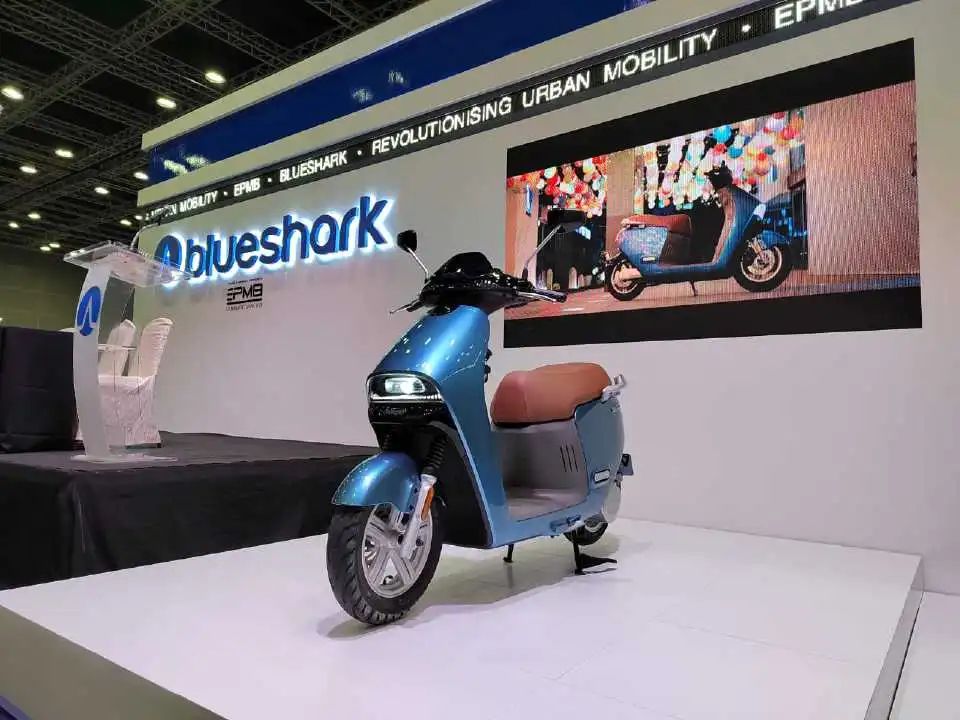
In short, some of the specifications that both motorcycles consist of are as follows
Dual Battery Range
- 110 km (NEDC Ratings)
Dual Battery Capacity
- 2.88 kWh
Maximum speed
- 80 km/h
Swap to go Blueshark stations
The R1 can be charged via conventional plug-in methods, however, the uniqueness of the vehicle offered is down to its secondary method of topping off through the swap-to-go stations offered by Blueshark. The stations bring forth the ability to swap depleted batteries for fully charged ones but only currently applicable to their R1 motorcycle line. The dedicated battery-swapping stations houses a series of columns and rows of slots for the battery to be slotted in and taken out.
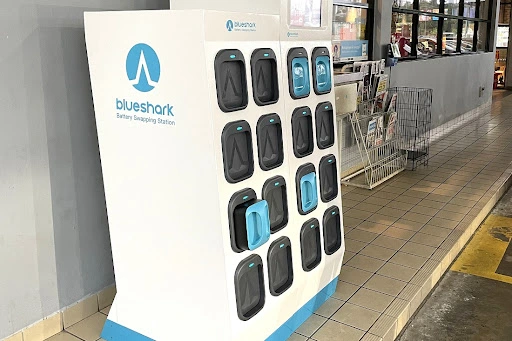
Features of the Blueshark station and their batteries
The battery station not only lets users top off their range on their R1 instantaneously but is able to charge the batteries returned to the empty housing slots of the stations, enabling later users to receive a fully charged battery to top off for their R1. Among some features of the battery swapping station and Blueshark smart battery are:
- The lifespan of their batteries are 4 times longer than conventional batteries, offering a charge cycle of up to 2000 cycles
- Efficient charging as it takes seconds to swap the batteries for a fully charged one.
- Batteries are embedded with up to 20 sensors that are used to visualize data of your ride
Blueshark application for Blueshark R1 Users
With any company that offers smart solutions, software must be implemented for the ease of visualization for their customers. Luckily Blueshark has its own application, Blueshark Malaysia App, that functions as an extension of data to their R1 electric motorcycles. The functionality that the application offers are as below:
- Vehicle management and monitoring of the current battery level
- Real-time battery usage and remaining range estimation
- Riding statistics and past ride mileage history
- Subscription management for battery plans

Subscription plans for the battery
The company charges a monthly rental of RM 79 for the two-lithium iron phosphate battery packs whilst offering a subscription fee plan for battery swapping intended for their swap-to-go stations. The subscription fees vary according to the number of battery swaps that the user wishes to swap every month

Blueshark future network plans for swap-to-go battery stations
Blueshark intends to expand its battery-swapping stations to a whopping 50 stations nationwide by the end of 2024. Currently, their expansion of 10 more stations consists of areas around the Klang Valley, among them are Shah Alam, Damansara Jaya, Jalan Cochrane, and many more making a total concurrent number of 15 total stations available.
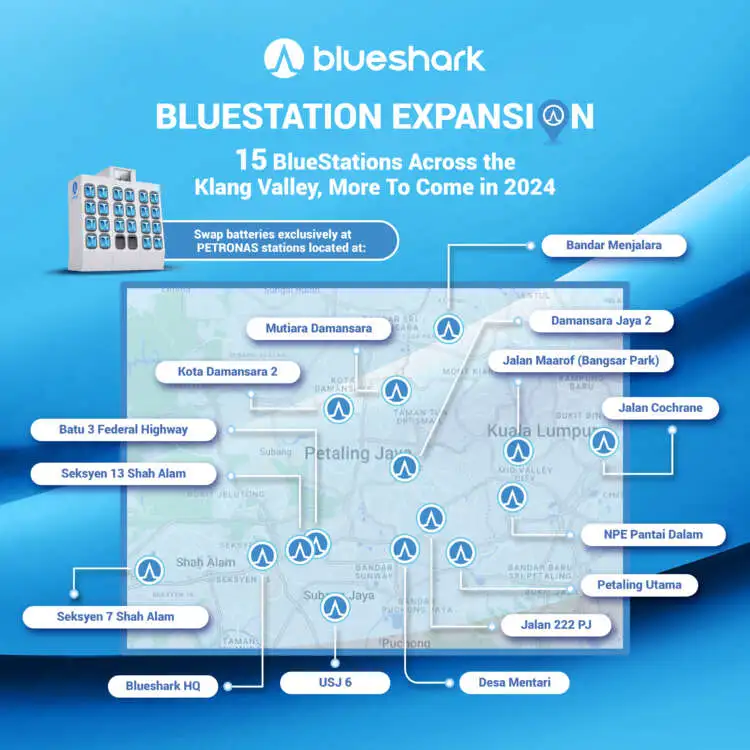
What does the development of battery swapping stations entail for other bigger electric vehicles in Malaysia?
Considering that initiatives of battery swapping stations were considered for smaller electric vehicles such as the R1 EV motorcycle, surely there must be plans for a battery swapping station on a larger scale focusing on larger electric vehicles growing in Malaysia.
Unfortunately, news regarding a battery station for larger electric motor vehicles is none when doing a simple web search under Malaysia. Nevertheless, outside of Malaysia, exists a large infrastructure of battery swapping stations that can accommodate larger electric vehicles.
NIO, China’s largest extensive network of battery swapping station provider

NIO Inc. is a Chinese carmaker manufacturer founded in 2014 that builds smart electric vehicles and innovates creative charging solutions. NIO’s reputation rose notably due to its development and operation of battery-swapping stations for their electric vehicles. As of June 13, more than 2,432 swap stations are operational in China. In Europe, they’ve established 30 operational battery charging stations. Services of up to an average of 65,779 recorded in April are performed every day in China according to NIO’s scale of data.
History of NIO’s battery charging station
NIO is adamant about incorporating and cooperating with the grid to ensure that the grid can utilize clean energy from the likes of wind and solar power. In 2018, NIO’s first generation of Power Swap stations was designed, fast forward to 2024, and NIO has introduced its fourth generation of Power Swap stations that features improvements such as:

NIO Power Swap 4.0
NIO has built a battery-swapping station that can fully automate a battery swap in 3 minutes. This is also without the need for the driver to exit the vehicle. A diagnostics of the vehicle’s electric drive system is also placed as a procedure under the process ensuring optimal status for the battery and the vehicle.
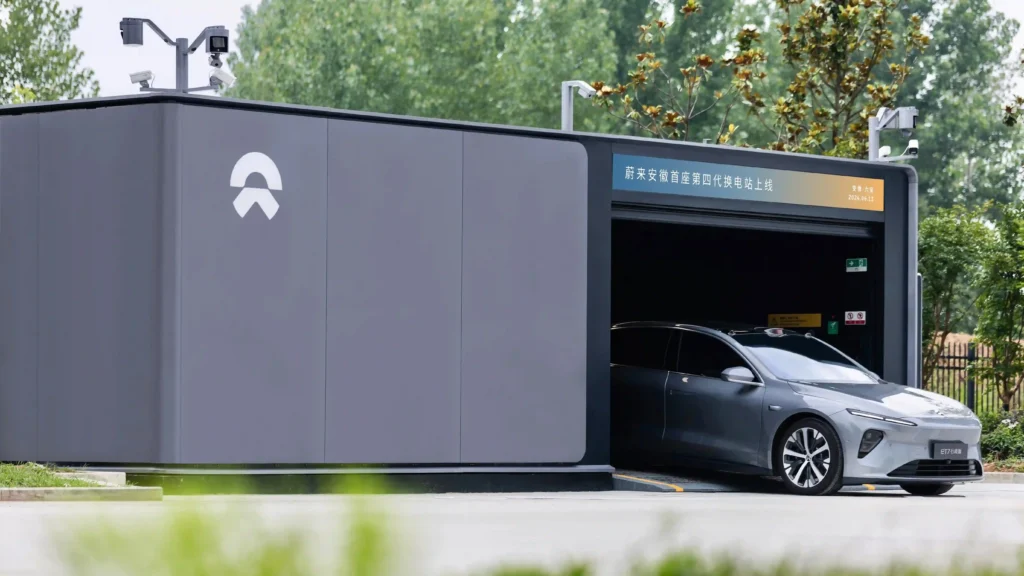
The battery swapping station is compatible with vehicles under NIO and their customers whom opted to purchase an NIO EV but instead chose access to the swapping network for the battery. NIO’s 4th generation battery swapping station opens to more brands and different vehicle models. The addition of compatible ONVO models, NIO’s second brand, and all battery swap strategic partners are enabled to access the new stations.
NIO Power Swap station feature highlights
- Battery swapping station takes up only 1/3 of the space of a charging station hub whilst accommodating the same number of users.
- The battery utilizes a low charging speed as it only takes 1/3 of the grid connection.
- Frequency balancing of the grid where the station charges the batteries at specific points in time where there is a need to get rid of the power.
NIO’s strategic partners
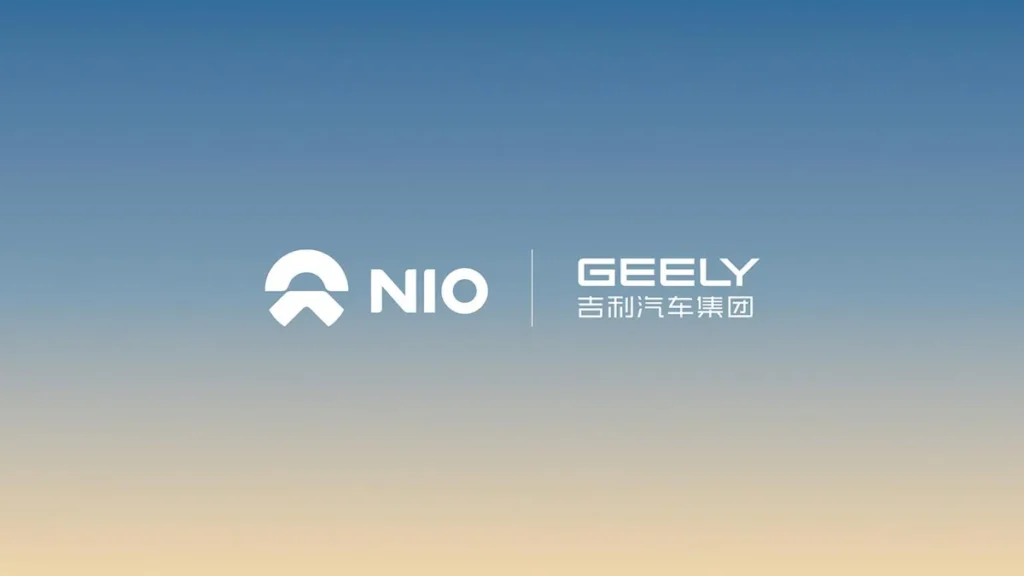
The rise of NIO is accompanied by strategic partnerships. Amongst the list of partnerships that have the most significance to Malaysia’s is none other than Geely Automobile which also shares ties with Proton. On March 27, NIO announced the union under regard of the charging network connectivity. The implication of said partnership trickles under other brands held by Geely and Geely’s own series of vehicles which include:
- Lynk & Co
- Zeekr
- Polestar
- Smart
The listed vehicles above can utilize NIO’s charging infrastructure and feature charging piles on the app’s charging map. Geely’s charging piles are also connected to NIO’s system. Interestingly, NIO added that Geely Holding has a shared agreement on cooperation in the fields of battery swap and charging to enhance user experience. On November 19, 2023, the services of battery swap services were agreed upon. The list of agreements between the two is as follows:
- Development of battery swappable batteries
- Construction and sharing of battery swap networks
- Development of battery swap-enabled vehicles
- Efficient battery asset management mechanism
Conclusion
The partnership synergy between NIO and Geely could be co-related with how Geely embraces its partnership with Proton. Leveraging Proton’s local knowledge of the infrastructure capabilities around the existing network charging stations in Malaysia could lead to an opportunity to address some gaps in the market of EV charging by:
- Supporting government interest in widely adopting battery swapping facilities as additional infrastructure to areas of available charging station hubs scattered across Malaysia.
- The scalability of NIO infrastructure could manipulate interest from neighboring countries around Malaysia, leading to more open partnerships to invest and collaborate in battery development fields.
- Diversify the charging capabilities for EVs and accelerate the standardization of compatible battery-swapping vehicles under its co-development of a battery-swapping vehicle with Geely for local EV models in Malaysia.


